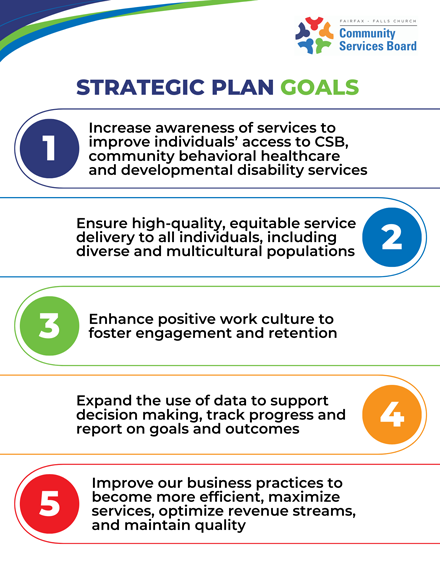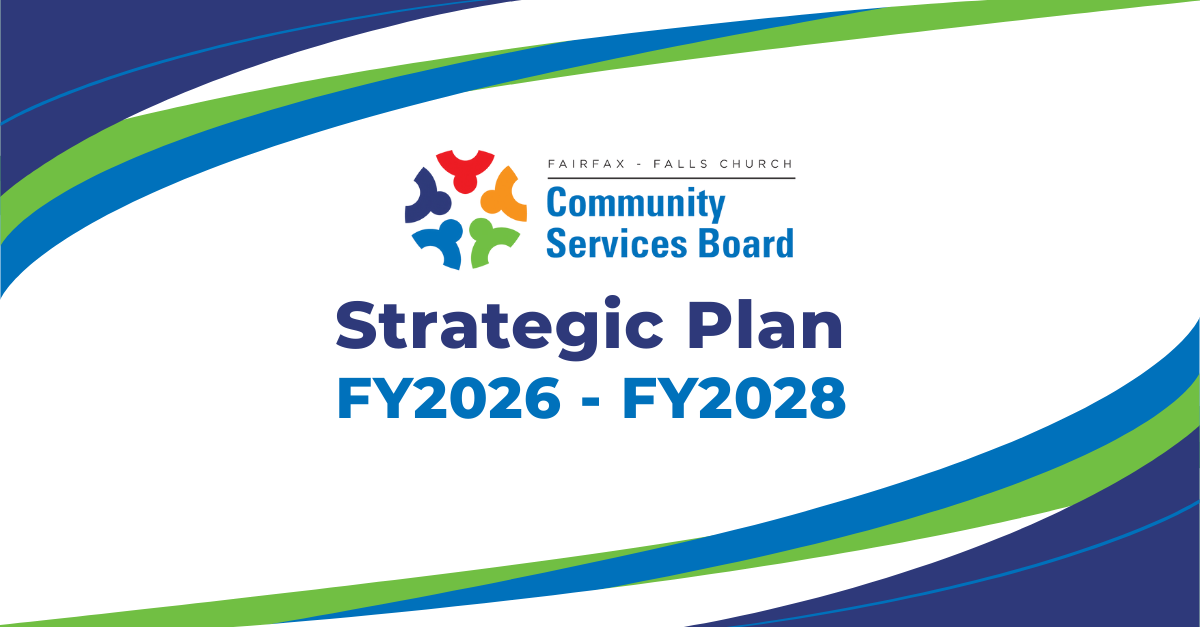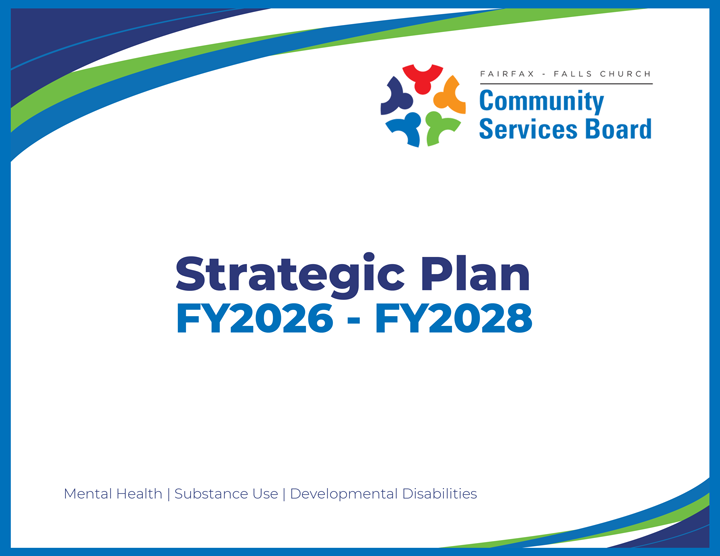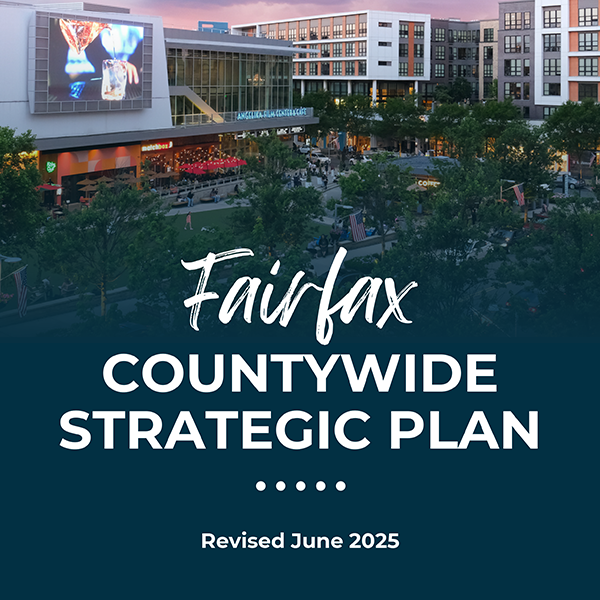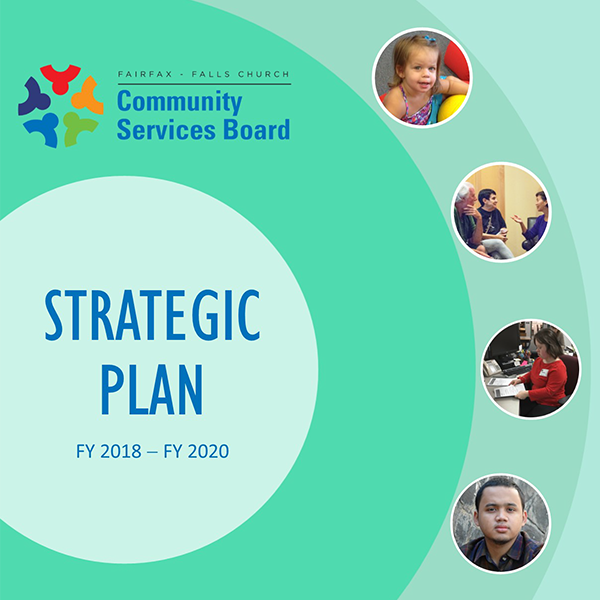Foreword
As the Community Services Board (CSB) developed this latest strategic plan, we were encouraged by the consistently high ratings and positive feedback we received from stakeholders. We heard clearly that the CSB is recognized for its exceptional leadership, dedicated staff, and strong collaboration with community partners in delivering critical services to the Fairfax-Falls Church community.
While it is gratifying to be recognized for our accomplishments, we understand that continued success requires ongoing evaluation, adaptation and growth. This strategic plan is a roadmap for that continued improvement. It reflects our commitment to serving our clients effectively, efficiently and with the highest standards of care.
It is important to recognize that this plan was not developed in isolation. The CSB is currently operating in one of the most dynamic and uncertain fiscal and legislative environments in its 50+ year history. In Fiscal Year 2026, the CSB was projected to receive nearly $5 million in federal funding and over $12 million from the state. However, anticipated reductions in federal spending and a shift of funding responsibilities to state and local governments have introduced significant financial uncertainty.
Concurrently, challenges at the local level — such as declining commercial real estate revenue and rising costs for supplies, capital equipment and employee compensation — have further impacted the county’s fiscal landscape. As a result, all county agencies, including the CSB, have been directed to prepare FY27 budgets reflecting a 5% reduction. For the CSB, this equates to over $9 million in necessary budget adjustments through cost savings or additional revenue generation.
To meet this challenge, CSB employees have been invited to contribute ideas for both cost-saving measures and new revenue opportunities. We believe those closest to our clients are best positioned to help shape an organization that is both fiscally resilient and mission-driven.
This strategic plan was developed with critical input from staff and community stakeholders and represents our third consecutive plan shaped through collaborative engagement. We are deeply grateful to everyone who contributed their time, expertise and perspectives throughout this process.
As we move forward, we encourage ongoing dialogue. If you identify opportunities to enhance our organizational efficiency or service delivery, we welcome your insights.
We are guided by the understanding that there is no health without mental health. Our ability to succeed is directly tied to the strength of our partnerships — with individuals, community organizations and county agencies. We remain committed to deepening these relationships and building new ones to expand our collective impact.
Together, we will bring this plan to life — and together, we will celebrate the progress we achieve.
- Daryl Washington, CSB Executive Director
- Andrew Scalise, CSB Board Chair
Strategic Plan Development
The strategic planning process began in July 2024, shortly after the CSB welcomed its new Senior Strategy Director. Working closely with the executive leadership team, the director outlined the approach for developing the agency’s first strategic plan since 2018, and presented an ambitious timeline for its completion.
In August 2024, a team of strategy division staff was created to help carry out the strategic planning process. Shortly thereafter, a 21-person steering committee was formed, comprising representation from programs across the CSB.
Between October 2024 and January 2025, the steering committee led an extensive outreach effort to gather input on the CSB’s strengths, weaknesses, opportunities, and threats (SWOT) from a diverse group of stakeholders, including:
- CSB Board Members
- County Leaders — 18 participants including agency directors and the Deputy County Executive for human services agencies
- Community Partners — 33 representatives from nonprofit organizations, partners, contractors and service providers that collaborate with the CSB in client referrals and service coordination
- CSB Employee Focus Groups — 20 groups consisting of staff from all CSB program areas, offering valuable insights from across the agency.
From December 2024 through March 2025, the CSB conducted a community survey to gather feedback from individuals who use its services. More than 700 clients responded, with over 90% indicating a favorable view of the CSB by answering “yes” to the question: “Would you recommend CSB services to your family and friends?”
In February and April, the CSB hosted six virtual focus groups, inviting clients to share their thoughts on the question: “What is one thing that could improve your experience as a client at the CSB?” Based on the feedback received, CSB staff took prompt action to address concerns and implement client-driven suggestions where feasible.
In total, input from nearly 1,000 stakeholders was collected and analyzed to identify key themes. These insights directly informed the development of the strategic priorities that serve as the foundation for this plan.
In parallel with the stakeholder engagement process, the CSB Communications Team conducted a historical analysis of the agency’s evolution. This effort produced a timeline highlighting the development and growth of CSB’s services in mental health, substance use and developmental disability support.
Following the initial data collection and engagement phases, the CSB conducted a SKEPTIC analysis to ensure that no critical information was overlooked in the development of an effective strategic plan. SKEPTIC is an acronym that encompasses the following areas:
- S: Socio-Demographics
- K: Competition
- E: Economics
- P: Political/Regulatory
- T: Technological
- I: Industry Trends
- C: Clients
This comprehensive review, combined with nine months of stakeholder engagement and data analysis, culminated in the identification of five strategic goals that form the foundation of the CSB’s FY2026 Strategic Plan:
- Increase awareness of services to improve individuals’ access to CSB, community behavioral healthcare and developmental disability services.
- Ensure high-quality, equitable service delivery to all individuals, including diverse and multicultural populations.
- Enhance positive work culture to foster engagement and retention.
- Expand the use of data to support decision-making, track progress, and report on goals and outcomes.
- Improve our business practices to become more efficient, maximize services, optimize revenue streams and maintain quality.
Connection to the County Strategic Plan
The CSB is a Fairfax County government agency, and our programs and services are aligned with the Countywide Strategic Plan (June 2025 revision). This plan centers on 10 community outcome areas that reflect the priorities most important to county residents. The CSB’s work primarily falls within two of these areas:
